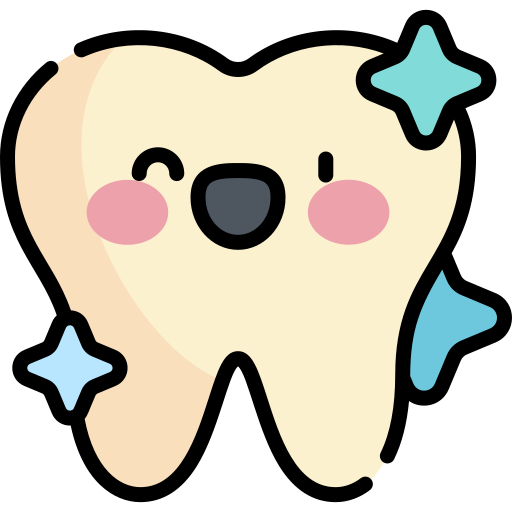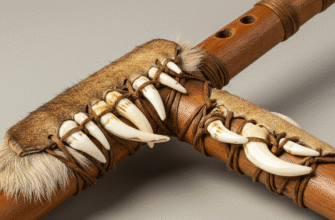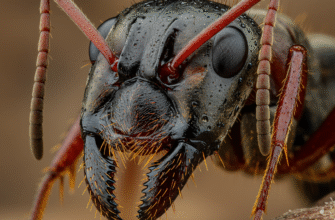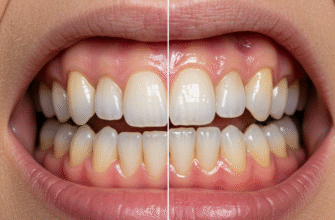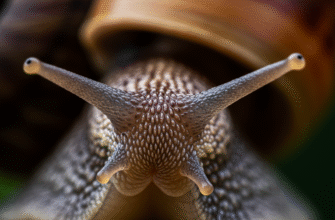Hidden from view, deep within the hard, mineralized exterior of each tooth, lies a vibrant, living core. This isn’t just empty space; it’s a sophisticated chamber known as the dental pulp. Often misunderstood, the pulp is far more than a simple remnant. It’s a bustling hub of biological activity, containing blood vessels that nourish the tooth, specialized cells that maintain its structure, and, crucially, an intricate network of nerves. These nerves are the tooth’s personal communication system, responsible for its ability to sense the world around it. Understanding this neural architecture reveals a fascinating aspect of our own biology, a testament to the complexity packed into even the smallest parts of our bodies.
The Living Core: Understanding Dental Pulp
The dental pulp resides in the centermost part of the tooth, occupying the pulp chamber within the crown (the visible part of the tooth) and extending down through the root canals within the roots. It is a soft connective tissue, remarkably similar in many ways to other connective tissues in the body, yet uniquely encased in hard dentin. Its primary roles include forming dentin (the layer beneath the enamel), providing nutrition to the tooth via its abundant blood supply, and, critically for this discussion, providing sensation through its rich nerve supply. This sensory function is what makes a tooth “alive” in terms of feeling, distinguishing it from an artificial replacement.
A Glimpse into the Nervous System’s Reach
To appreciate the nerves in the dental pulp, it helps to consider the broader nervous system. Imagine a vast, interconnected web, with the brain and spinal cord as central processing units. From these centers, countless nerve fibers branch out, reaching every conceivable part of the body, from the tips of our toes to the inner sanctum of our teeth. These fibers act as information highways, transmitting signals at incredible speeds. Some carry instructions from the brain to muscles, while others relay sensory information back to the brain, allowing us to perceive touch, temperature, pressure, and, importantly, stimuli that might indicate potential harm. The nerves entering the teeth are branches of the trigeminal nerve, the fifth cranial nerve, which is a major sensory nerve for the face and head.
The Nerve Fibers of the Pulp: A Closer Look
The nerves that make their way into the dental pulp are primarily sensory, meaning their main job is to detect and transmit information about the tooth’s environment. They are not all identical, however. Like different types of cables designed for specific data, pulpal nerves come in distinct forms, each contributing uniquely to the tooth’s sensory experience. These fibers are generally categorized based on their diameter and whether they possess a fatty insulating sheath called myelin, which influences their signal transmission speed.
Myelinated A-fibers
Among the most notable are the myelinated A-fibers. The myelin sheath acts like insulation on an electrical wire, allowing for faster signal transmission. Within this group, the A-delta (Aδ) fibers are particularly significant in the pulp. These are relatively thin myelinated fibers, typically ranging from 1 to 6 micrometers in diameter. When stimulated, they are responsible for conveying sensations that are generally described as sharp, well-localized, and quick to arise. Think of the immediate, distinct feeling when something very cold touches a sensitive tooth; that sensation is often the work of A-delta fibers. They generally have a lower threshold for stimulation compared to other fiber types. There is also a category known as A-beta (Aβ) fibers, which are larger and faster conducting, typically associated with non-painful touch and pressure sensations in other parts of the body. While their prominent role directly within the pulp tissue itself is subject to ongoing research, they are abundant in the surrounding periodontal ligament, contributing to the sense of tooth pressure and position during chewing.
Unmyelinated C-fibers
Contrasting with the A-fibers are the unmyelinated C-fibers. These are the most numerous nerve fibers found in the dental pulp, making up the bulk of its neural content. They are much thinner than A-delta fibers, usually less than 1.5 micrometers in diameter. Lacking the myelin sheath, they transmit signals more slowly. The sensations they carry are often characterized as dull, aching, throbbing, or burning, and can be more diffuse and difficult to pinpoint to a specific tooth. C-fibers are typically activated by more intense stimuli and are particularly involved in sensations associated with inflammatory processes within the pulp. An interesting characteristic of C-fibers is their relative resistance to hypoxia, or low oxygen conditions, which can sometimes occur if the pulp’s blood supply is compromised. This means they can continue to signal even when other cellular components of the pulp are struggling.
Journey of Nerves into the Tooth
The journey of these nerve fibers into the tooth is a marvel of biological engineering. The main nerve supply to the teeth originates from branches of the trigeminal nerve. Large nerve bundles, containing both sensory and autonomic fibers (which regulate blood flow), approach the tip of each tooth root. They enter the tooth through a tiny opening, or sometimes multiple small openings, collectively called the apical foramen. Once inside the confines of the root canal, these nerve bundles, accompanied by blood vessels that form the neurovascular bundle, travel upwards. They course through the narrow passageway of the root canal, or canals if the tooth has multiple roots, towards the wider pulp chamber located in the crown of the tooth. As they ascend, the main nerve trunks begin to divide and branch, much like a tree spreading its limbs, fanning out to prepare for the comprehensive innervation of the entire pulp tissue.
The Subodontoblastic Plexus: A Hub of Activity
As these nerve fibers reach the main pulp chamber, particularly in the coronal part (the portion within the crown where the pulp is widest), they don’t just simply end. Instead, they form an incredibly dense and complex network just beneath the layer of specialized, dentin-producing cells called odontoblasts. This intricate mesh is famously known as the Plexus of Raschkow. It’s not a haphazard tangle but a highly organized, multi-layered arrangement of nerve fibers, most prominent in the roof and lateral walls of the pulp chamber. Within this bustling plexus, the nerves, predominantly the A-delta fibers (which lose their myelin sheath as they enter the plexus) and the unmyelinated C-fibers, branch profusely, intertwining and crisscrossing to form a rich sensory net that effectively covers the periphery of the pulp. Think of it as a sophisticated surveillance system lying in wait. From this subodontoblastic plexus, even finer, unmyelinated nerve endings, often described as terminal axons, extend further, moving towards the odontoblasts themselves. Some of these delicate nerve fibers can be observed in very close association with the cell bodies of odontoblasts, and some even extend for a short distance, perhaps a few micrometers, into the innermost part of the dentinal tubules – the microscopic channels that radiate outwards through the dentin towards the tooth’s surface. This strategic positioning is key to the tooth’s ability to detect changes occurring deep within its structure or even on its surface.
The dental pulp contains a sophisticated array of nerve fibers crucial for sensation. Primarily, these include myelinated A-delta fibers, responsible for transmitting sharp, immediate sensations like those from cold stimuli. Additionally, numerous unmyelinated C-fibers convey duller, more persistent signals often associated with inflammation. These nerves enter the tooth via the apical foramen at the root tip. They then ascend and form a dense network called the Plexus of Raschkow, located just beneath the odontoblast layer at the pulp’s periphery.
Sensing the World: How Pulpal Nerves Function
The primary role of this elaborate nerve system within the pulp is sensory perception, acting as a crucial alarm system for the tooth. While the pulp can undoubtedly sense temperature changes and possibly extreme pressure, the predominant sensation elicited by stimulating pulpal nerves directly is often interpreted as pain, regardless of the stimulus type. This isn’t a design flaw; it’s a highly effective protective mechanism. Pain signals that the tooth is encountering conditions that could be harmful, prompting a behavioral response (like avoiding certain foods or seeking care) to protect it from further damage.
The exact mechanisms by which stimuli, especially those applied to the outer dentin (which itself is not directly innervated extensively), are transmitted to the nerves in the pulp have been a subject of much study and fascination. Several ideas have been proposed over the years:- Direct Innervation Theory: This classic theory suggested that nerves extend from the pulp far out into the dentinal tubules, possibly reaching the dentinoenamel junction. While some nerve endings do enter the very inner parts of tubules (closest to the pulp), current evidence shows they don’t typically extend very far, certainly not to the outer dentin in most cases.
- Odontoblast Receptor Theory: This proposed that the odontoblasts themselves act as sensory cells, detecting stimuli with their long processes that do extend through the dentinal tubules, and then chemically or electrically passing the signal to the closely associated nerve endings in the plexus. Odontoblasts are indeed highly specialized cells, but their direct role as primary sensory receptors capable of initiating a nerve impulse is still an area of active research and debate.
- Hydrodynamic Theory: This is currently the most widely accepted and evidence-supported explanation for dentin sensitivity. It posits that various stimuli (like temperature changes, osmotic shifts caused by sugary substances, or air drying the dentin surface) cause a rapid movement of the fluid that fills the dentinal tubules. This fluid movement, whether inward or outward, is thought to physically distort and thereby stimulate the mechanosensitive nerve endings located in the Plexus of Raschkow and those that loop into the inner ends of the tubules. This stimulation then triggers a nerve signal.
Regardless of the precise transduction mechanism for all types of stimuli, the outcome is the activation of A-delta or C-fibers, leading to the transmission of sensory information along neural pathways to the brain, where it is interpreted.
The Dynamic Nature of Pulpal Innervation
The nerve network within the dental pulp is not a static, unchanging blueprint laid down early in life and remaining fixed thereafter. Instead, it’s a remarkably dynamic system, capable of subtle adaptation and response to its local environment and physiological changes over an individual’s lifetime. For instance, research suggests that in response to very slow, long-term irritants or minor physiological wear, there can sometimes be an observed increase in nerve sprouting or branching in certain areas of the pulp, a phenomenon known as neural plasticity. It’s as if the tooth is attempting to heighten its sensory surveillance in regions experiencing persistent, low-grade stimuli. This demonstrates the pulp’s capacity for reactive changes. Conversely, with advancing age, there’s often a gradual, natural reduction in the overall density of pulpal innervation. This may be accompanied by other age-related alterations in the pulp tissue, such as decreased cellularity (fewer cells), an increase in fibrous connective tissue content, and sometimes the formation of diffuse calcifications or discrete pulp stones within the pulp chamber. The pulp space itself may also become progressively smaller due to the continued, slow deposition of secondary dentin on the inner walls of the pulp chamber and root canals throughout life. These are not typically signs of a problem state, but rather represent natural maturational and aging processes, reflecting the tooth’s long journey and its continuous, albeit slow, biological activity and adaptation over decades.
A Delicate Balance
The health and responsiveness of this intricate neural network are intrinsically linked to the overall health of the dental pulp. The pulp relies on its blood supply, entering through the same apical foramen as the nerves, to provide oxygen and nutrients. Any compromise to this vascular system can, in turn, affect nerve function. The nerves themselves also play roles beyond simple sensation, releasing neuropeptides that can influence blood flow, inflammation, and even tissue repair processes within the pulp. This highlights a complex interplay between the vascular, immune, and neural components of this vital tissue. It’s a finely tuned ecosystem, encased within its hard dental shell, constantly monitoring and responding to its surroundings. The sensitivity it provides, while sometimes uncomfortable, is a fundamental part of how our bodies protect and maintain themselves, even at the level of a single tooth.
In conclusion, the intricate network of nerves within your dental pulp is a testament to the sophisticated biology packed into every part of our being. Far from being inert, each tooth is a living organ, equipped with a complex sensory apparatus that allows it to respond to its environment. The distinct roles of A-delta and C-fibers, the organized complexity of the Plexus of Raschkow, and the subtle yet effective communication likely occurring via mechanisms like the hydrodynamic theory all contribute to a system designed for awareness and protection. While often only brought to our conscious attention when something is amiss, this neural network is constantly on guard, a silent sentinel within the core of the tooth, underscoring the remarkable and often underappreciated vitality and complexity of our dental structures.
